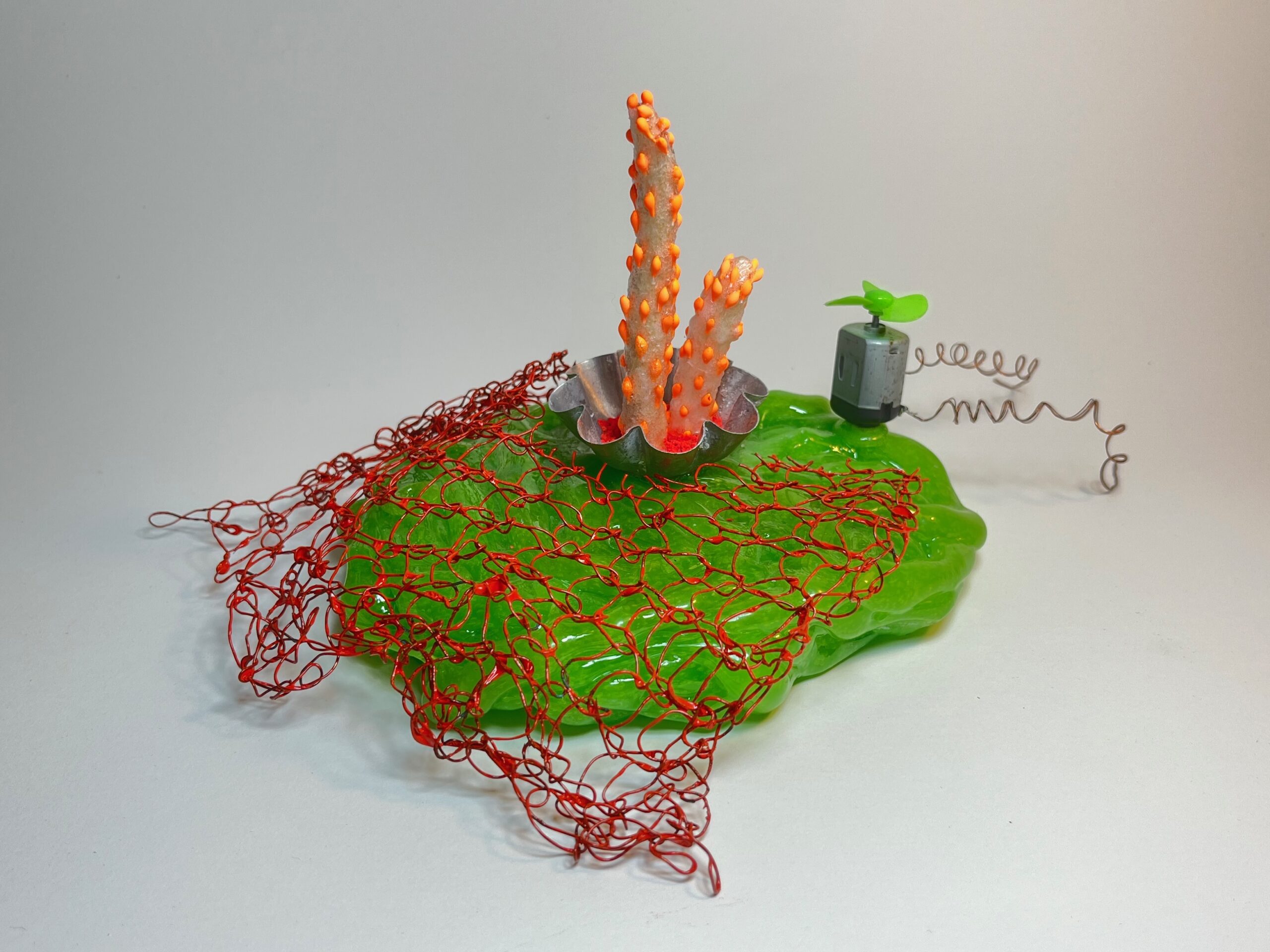
Ms. Carol Siatras
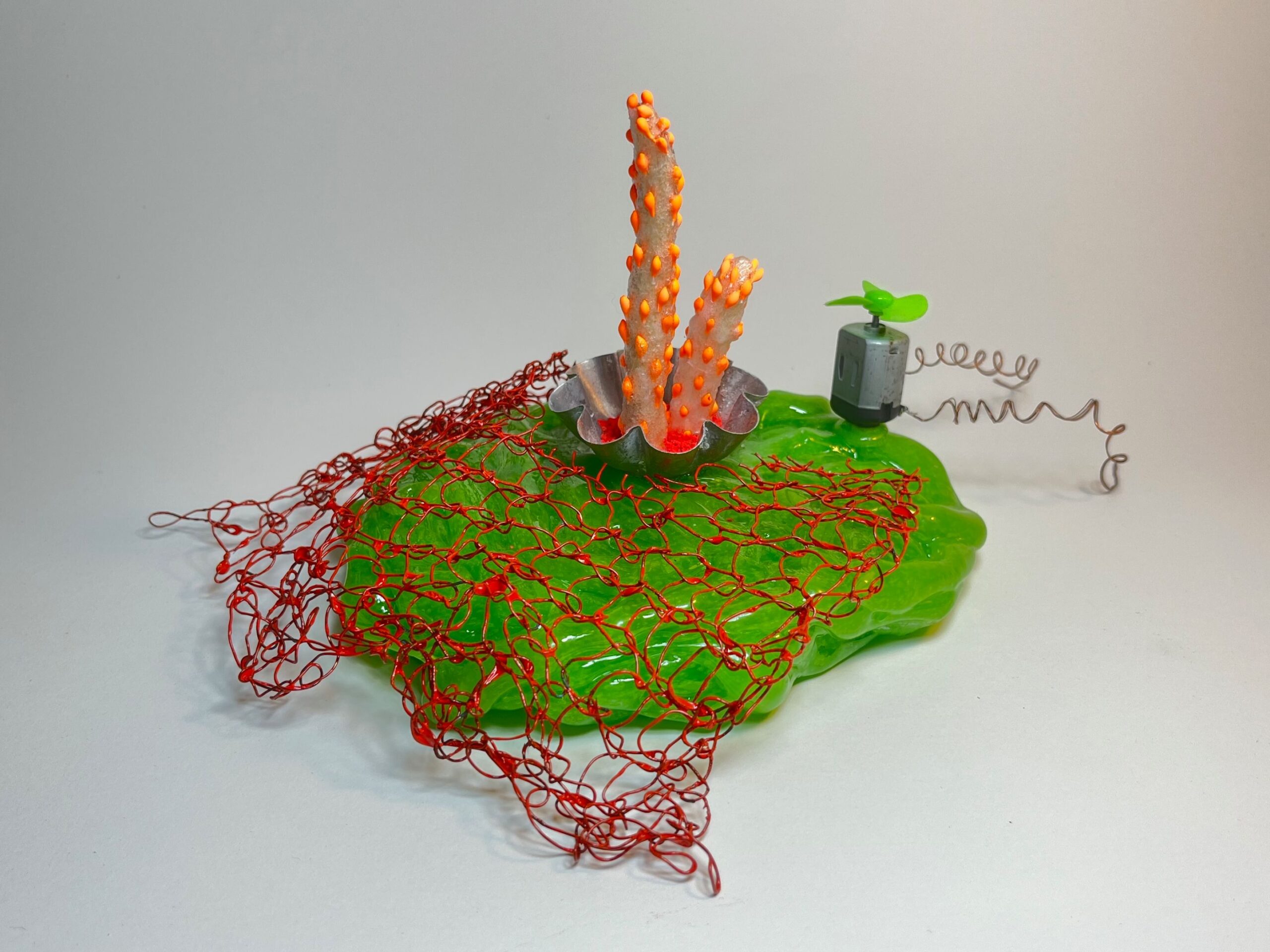
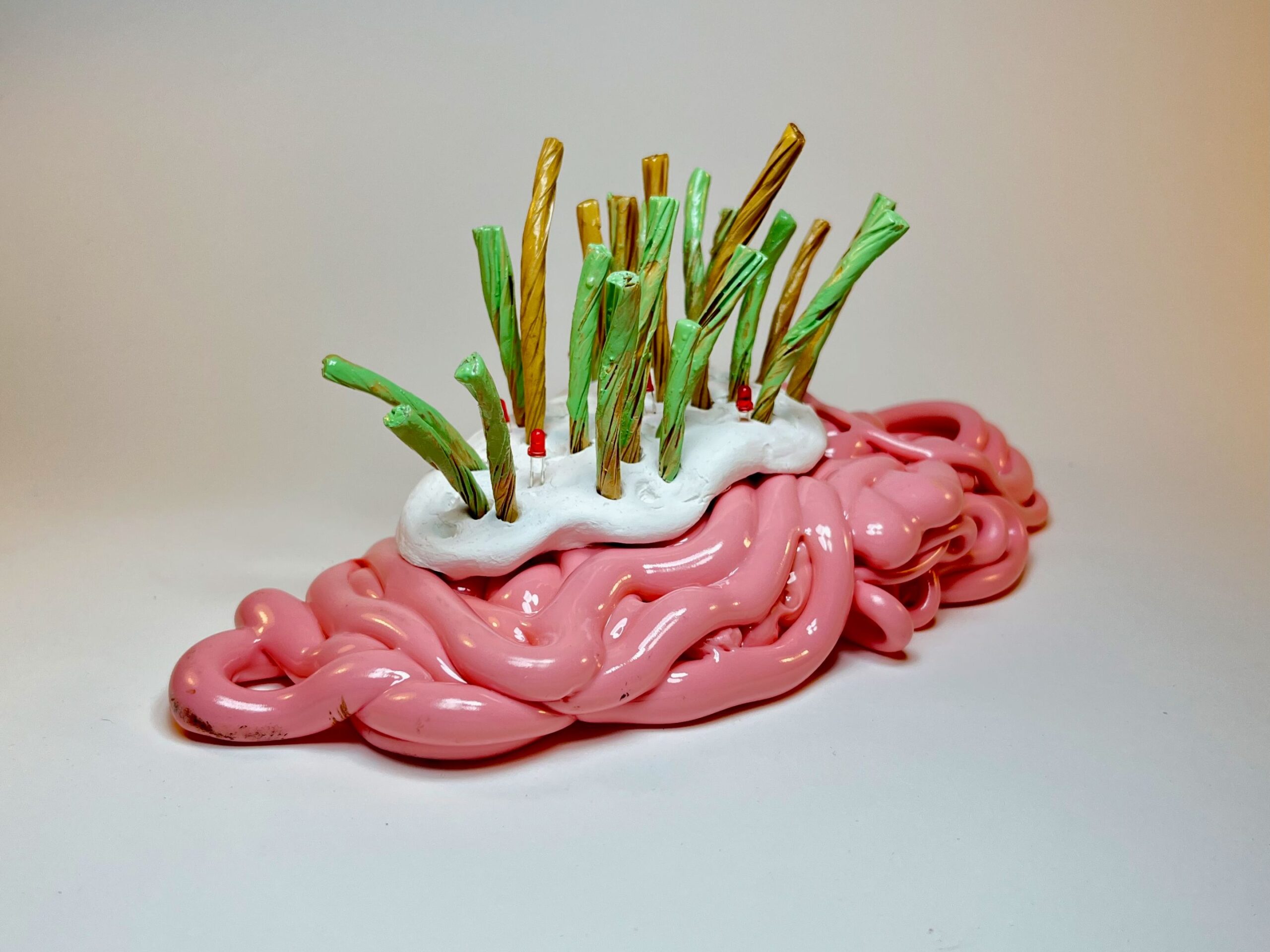
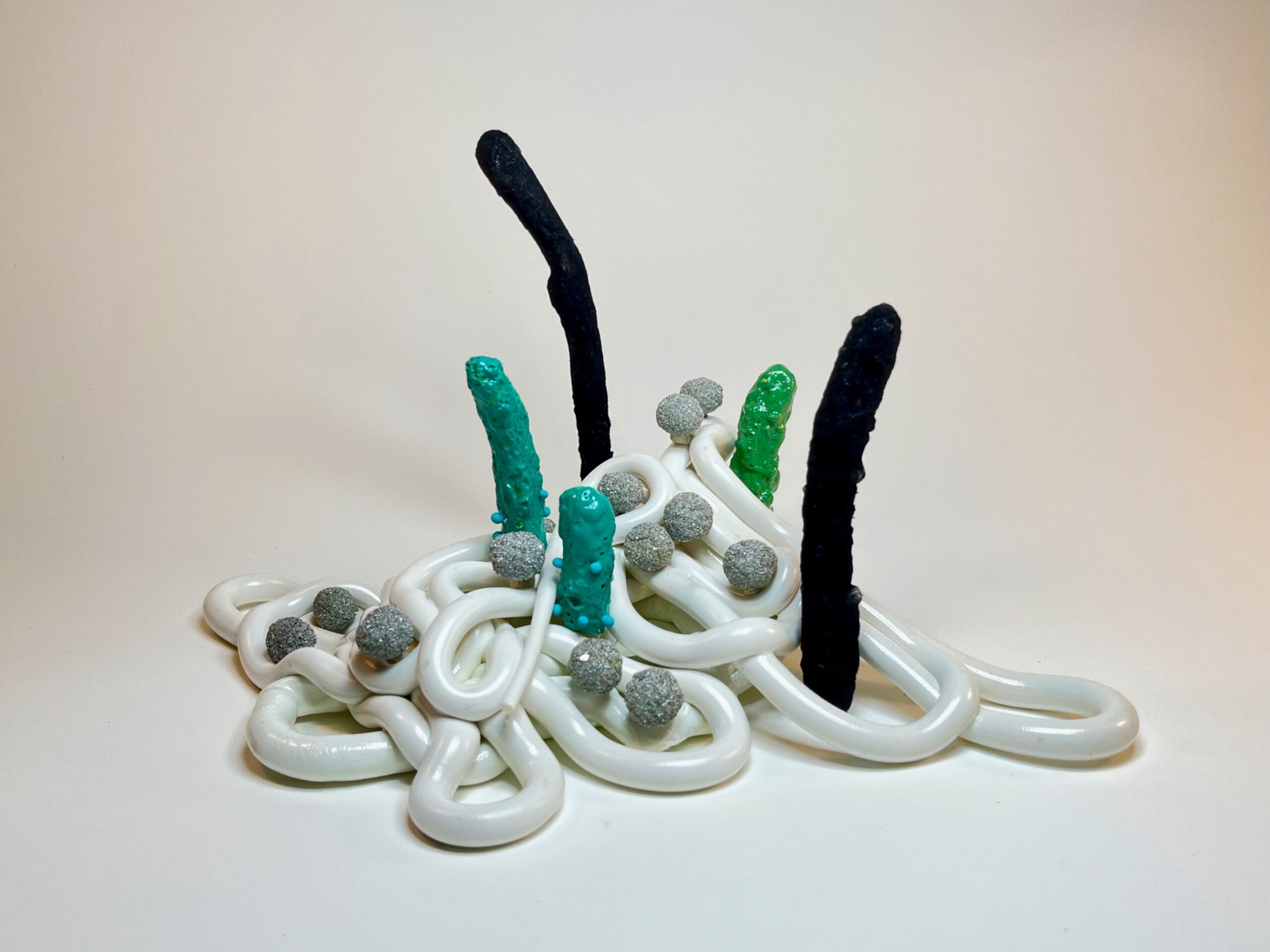
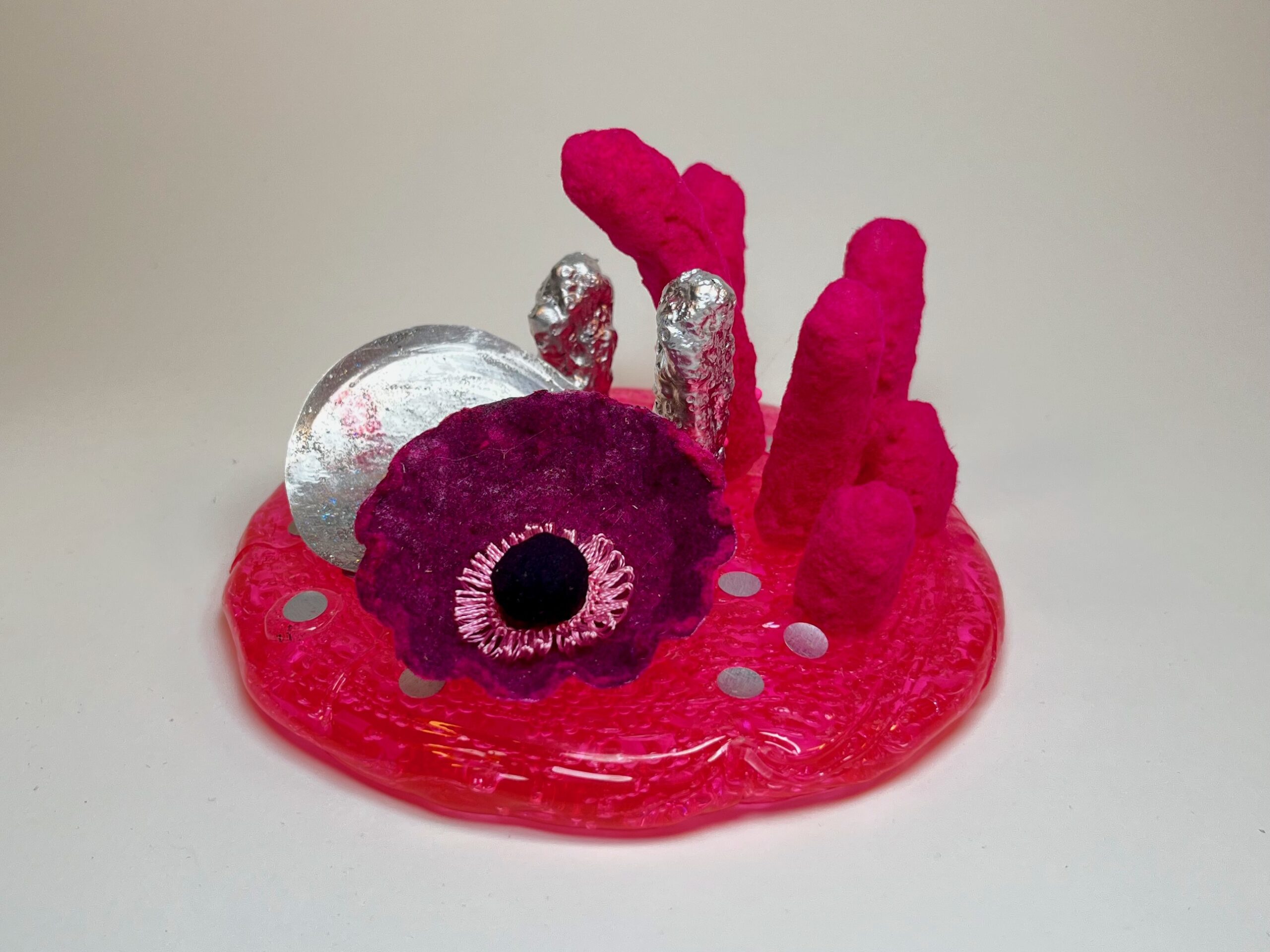
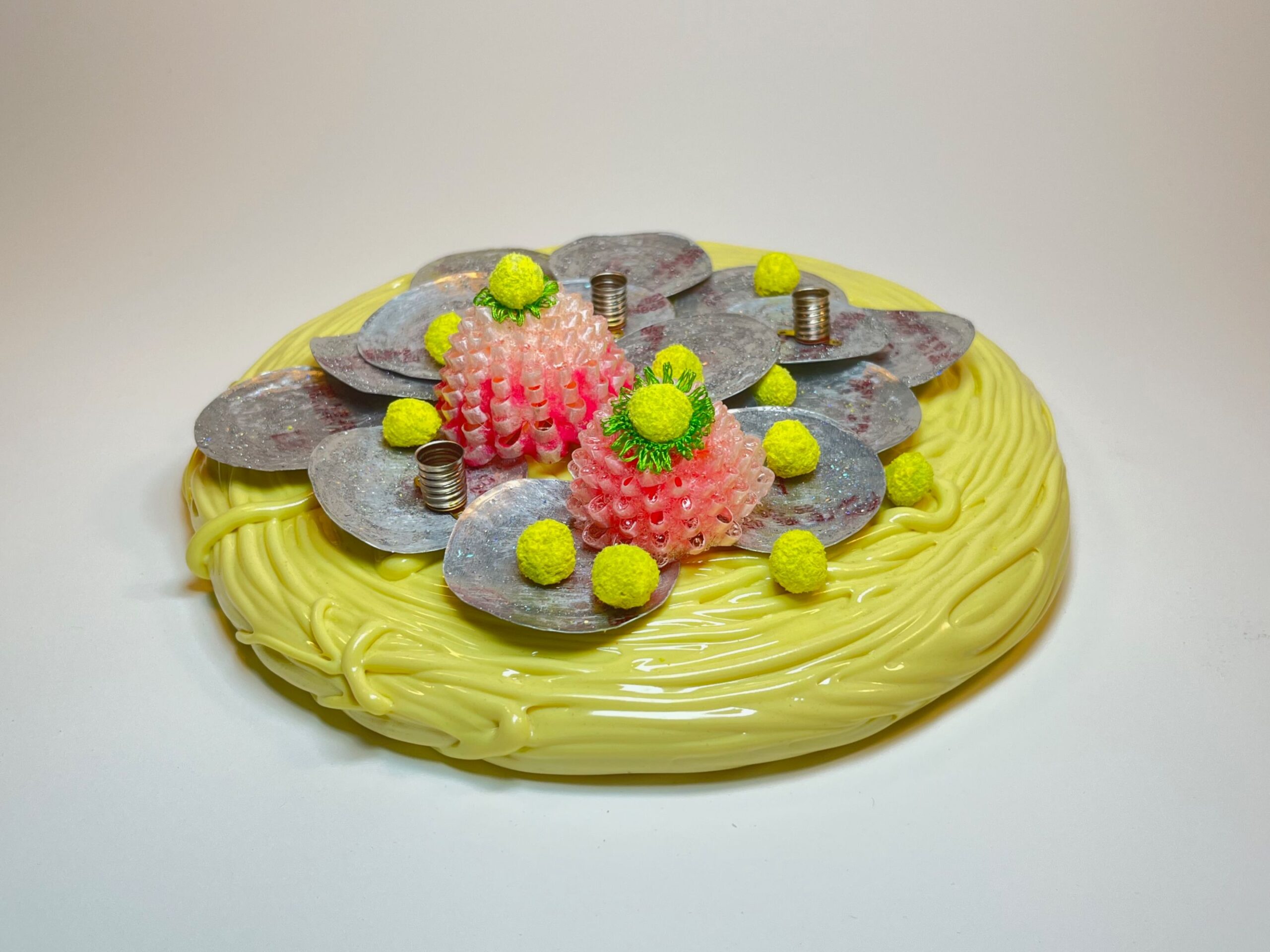
Abstract :
This series of five biomorphic maquettes explores the generative potential of collaboration between artist and artificial intelligence (AI). Utilizing a diverse range of recycled and “found” materials, the sculptures evoke organic forms reminiscent of extraterrestrial landscapes or hidden underwater worlds. The project began with the creation of small, intricate details – no larger than a few centimeters – each one an exploration of organic form. Through ongoing conversations with an AI large language model, these individual pieces were further developed, with the AI offering interpretations and potential narratives for the evolving forms. Excerpts from these conversations will be presented alongside the final maquettes, allowing viewers to witness the collaborative process and its impact on the artistic direction.
The materials themselves – repurposed plastics, aluminum, flocking powder, and everyday objects – contribute significantly to the theme. Their diverse textures and unexpected combinations highlight the potential for creative reuse in a world grappling with waste. By employing unconventional materials, the sculptures challenge viewers to reconsider the inherent beauty and potential within everyday discards.
The biomorphic forms of the maquettes invite viewers to engage with them on multiple levels. While the visual language suggests extraterrestrial or underwater environments, the collaborative process behind their creation underscores the boundless possibilities of artistic exploration when facilitated by AI. This project serves as a testament to the exciting new territories that can be revealed through the collaborative spirit between artist and machine.
Objectives :
This series five biomorphic maquettes aligns with the symposium theme of “The Devil is in the Details” by considering the power of detail as a starting point for artistic exploration. The project represents a departure from my usual creative process, which typically begins with a broader vision. Instead, these maquettes originated from experiments with details, with various small, organic-inspired elements crafted before the overall forms and compostitions emerged.
Driven by a desire to explore new avenues of creation as well as to test the potential of collaborative artistic exploration with AI, these works utilized a unique workflow. The initial details for this series were crafted without a predetermined final form in mind. I then engaged in ongoing conversations with a large language model, specifically Gemini, by presenting images or descriptions of these details and inviting interpretations or potential narratives. Through this dialogue, the details evolved and coalesced into the biomorphic forms presented in these maquettes. Excerpts from these conversations will be presented alongside the final artwork, offering viewers a glimpse into the collaborative process and its influence on the artistic direction.
Conceptual Framework :
This project delves into the burgeoning realm of artificial intelligence (AI) as a tool for artistic collaboration. By engaging in ongoing conversations with a large language model, I explored the potential for AI to offer fresh perspectives and interpretations during the creative process. This collaborative approach informed the development of the sculptures, which themselves embody the concept of bricolage – the assemblage of diverse elements into a cohesive whole. The utilization of recycled and “found” materials alongside the AI collaboration reflects the project’s core theme of artistic exploration through unexpected partnerships and unconventional methodologies.
Process / Methodology :
Techniques and Materials :
Result / Conclusion :
The unexpected forms and narratives that emerged from my conversations with Gemni have been helpful and I plan to exploring this collaborative approach further.
These five maquettes serve as a springboard for a larger series of sculptures. The insights gleaned from working with Gemini will inform the development of these larger pieces, influencing both their form and thematic content. By utilizing a larger scale and incorporating additional materials, I aim to further explore the artistic possibilities revealed through this initial collaboration. The maquettes allows viewers to witness the genesis of this ongoing project, offering a glimpse into the transformative power of AI collaboration in the artistic process.
References :
-
Hanson, D., Storm, F., Huang, W., Krisciunas, V., Darrow, T., Brown, A., … & Pickrell, A. (2020). SophiaPop: Experiments in Human-AI Collaboration on Popular Music. arXiv preprint arXiv:2011.10363: https://arxiv.org/abs/2011.10363
-
Saliba, J. (2020, August 19). AI and art as a scientific experiment, AI and artists’ collaboration and AI as an artistic medium.
-
Suh, M., Youngblom, E., Terry, M., & Cai, C. J. (2021, May). AI as social glue: uncovering the social affordances of human-AI collaborative creativity. In Proceedings of the CHI Conference on Human Factors in Computing Systems (pp. 1-13). Association for Computing Machinery: https://doi.org/10.1145/3411764.3445183
-
Gebhardt, E., & Sedig, K. (2022). Redefining Creativity in the Era of AI? Perspectives of Computer Scientists and New Media Artists. Journal of Creative Media Studies, 12(2), 183-202. Taylor & Francis Online
-
Amato, G., Cardaci, M., Engelke, U., Giannantonio, M., Guzzo, T., Lipari, D., Maggio, C., Morreale, E., Sperandeo, S., & Trovato, G. (2019). AI in Art and Creativity: Exploring the Boundaries of Human-Machine Collaboration.
-
Streichert, M. (2023). Human-AI Collaboration in Creative Arts and Content Generation.
-
Qian, Z., Sun, Y., Liu, Y., & Li, Y. (2020). A Survey on Creative AI Art Generation. IEEE Transactions on Emerging Topics in Computational Intelligence, 4(2), 189-201.